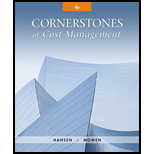
Concept explainers
Bannister Company, an electronics firm, buys circuit boards and manually inserts various electronic devices into the printed circuit board. Bannister sells its products to original equipment manufacturers. Profits for the last two years have been less than expected. Mandy Confer, owner of Bannister, was convinced that her firm needed to adopt a revenue growth and cost reduction strategy to increase overall profits.
After a careful review of her firm’s condition, Mandy realized that the main obstacle for increasing revenues and reducing costs was the high defect rate of her products (a 6 percent reject rate). She was certain that revenues would grow if the defect rate was reduced dramatically. Costs would also decline as there would be fewer rejects and less rework. By decreasing the defect rate, customer satisfaction would increase, causing, in turn, an increase in market share. Mandy also felt that the following actions were needed to help ensure the success of the revenue growth and cost reduction strategy:
- a. Improve the soldering capabilities by sending employees to an outside course.
- b. Redesign the insertion process to eliminate some of the common mistakes.
- c. Improve the procurement process by selecting suppliers that provide higher-quality circuit boards.
Required:
- 1. State the revenue growth and cost reduction strategy using a series of cause-and-effect relationships expressed as if-then statements.
- 2. Illustrate the strategy using a strategy map.
- 3. Explain how the revenue growth strategy can be tested. In your explanation, discuss the role of lead and lag measures, targets, and double-loop feedback.
Trending nowThis is a popular solution!

Chapter 13 Solutions
Cornerstones of Cost Management (Cornerstones Series)
 Cornerstones of Cost Management (Cornerstones Ser...AccountingISBN:9781305970663Author:Don R. Hansen, Maryanne M. MowenPublisher:Cengage Learning
Cornerstones of Cost Management (Cornerstones Ser...AccountingISBN:9781305970663Author:Don R. Hansen, Maryanne M. MowenPublisher:Cengage Learning
